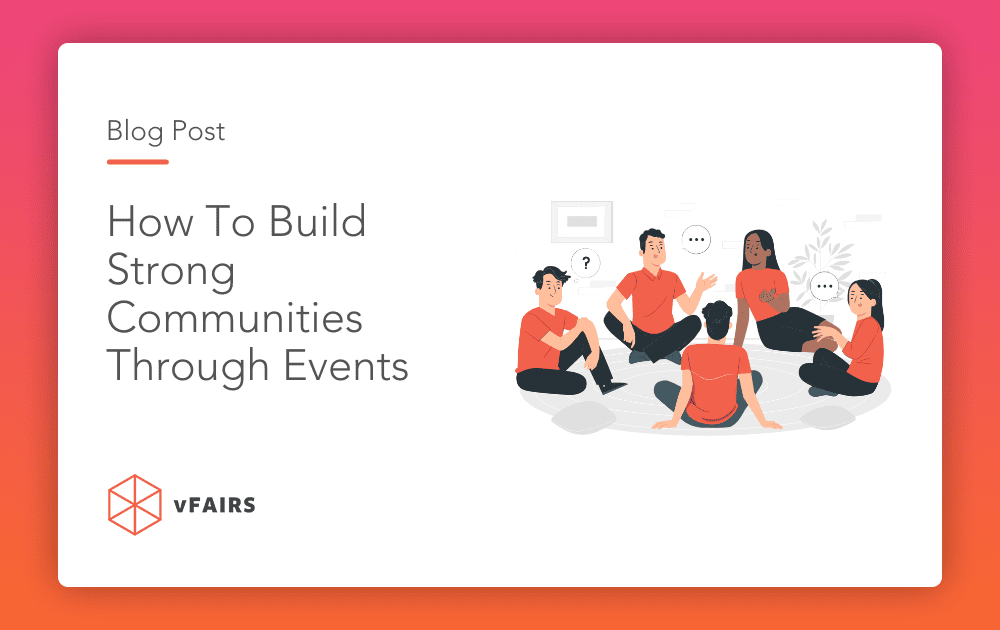This post explores my role in iterations of (re)establishing an online hub for UOW BCM students. Initially, my group aimed to revive the Digital Media Society (DMS), thinking it was central to the BCM community. However, we realised its scope was limited and shifted our focus to engaging BCM students directly via Twitter. Due to narrow success, we again pivoted to Discord, already popular in the BCM curriculum, after learning about Twitter's future as a teaching tool. My previous post detailed my work on the BCM Bot, an OpenAI-powered Twitter/X and Discord bot that accurately answers student queries.

Enhancing User Engagement and Interaction
As discussed in my previous post, the BCM Bot leverages OpenAI's capability to analyse user tweets and respond intelligently. This has been crucial for the bot's engagement. Trained on Subject Outlines, the UOW website, and other text-based sources, the BCM Bot can provide real-time answers to queries related to both BCM and UOW. In a world increasingly moving towards fragmented data sources (Bodó, et al., 2021), the BCM Bot is a reliable source for BCM and UOW-related information. It can also tap into OpenAI's extensive dataset to build relevant responses on topics outside the UOW-specific training. The success of the BCM Bot is evident from high staff engagement and over 200 interactions with students on Twitter.
As part of my presentation, I spoke about the brilliant #BCM206 project @TheBCMBot by Charlotte, James, Kiara, Eliza , Sam, Brianna, and Tara. This is just one example of the future of Generative AI in enhancing student learning experiences.
— Jasmyn (@jasmynconnell) September 26, 2023
Motivated by the UOW Library's showcase of their AI-driven Library Bot 'Moodji', which can "adapt its service to the individual user, making the user experience more personal" (Sie & Nolan, 2019).
Good bot
— UOW Library (@UOW_Library) October 20, 2023
Initially, I assumed UOW would prefer a more professional-toned bot to represent their BCM degree publicly. However, students enjoy interacting with a more casual, persona-driven bot. This has not only fostered a sense of community but also hints at the formation of online tribes within the BCM educational sphere. To that end, I've been developing a standard persona for the BCM Bot—making adjustments based on student feedback and each time the bot is used, to make the interactions more relatable and less intimidating. This is still a work in progress, particularly on the Discord variation of the BCM Bot.


Scalability & Sustainability
As the end of the semester approaches, I'm confronted with the question of what will happen to our project after our group disbands. The BCM Bot is designed to continue functioning well beyond this project's scope, and I intend to maintain it for the foreseeable future. However, keeping the bot's database current is a considerable task. To address this, I've begun sharing the training database with the BCM teaching team, enabling them to add their subject data. This self-serve approach has been shown to boost usage, as it eliminates time-consuming back-and-forth communication and allows users to add data at their own pace and time. This should make staff more comfortable recommending the bot to students for queries. Because OpenAI's text interpretation is quite specific, I've created a form that staff can fill out. Once submitted, an email receipt confirms the data has been added, ensuring data accuracy and acting as a moderation stage to verify trusted sources.
The BCM Bot is a long-term project for me, and I aim to continue its development and explore use-cases. To that end, scalability is a key consideration. Currently, both the Twitter and Discord bots are hosted on a Mini PC at my home—the same one used as a downlink for NOAA and METEOR Weather Satellites. (Very cyberpunk of me).


This has put a strain on the Mini PC. Since the public launch, I've noted numerous times where requests have either been delayed or completely lost due to internet bandwidth issues on my home network or a recent power outage on the PC, which caused our demo/announcement on the DMS Discord to fail.

Sorry for keeping you waiting so long! I got involved in a fight with Norton Internet Firewall. Sounds like Jasmyn knows how to keep it real! 😂 Teaching is all about that balance, isn't it? 🐶➡️👹 #WorkHardPlayHard 🌟
— BCM Bot (@TheBCMBot) September 14, 2023

If staff and students were to genuinely trust the BCM Bot to answer questions, it would need to be reliable. A study emphasised that staff have mixed opinions on integrating chatbots into regular teaching (Too, et al., 2018). Therefore, avoiding generating a negative perception of our bot is essential. So, I switched to Vultr, which offers cost-effective VPS—providing Discord and Twitter bots with 1TB of bandwidth and backup power, dramatically improving reliability. This move aligns with the broader movement of decentralisation, as it removes the bot's dependency on a single point of failure—my home network—thereby enhancing its reliability and scalability (Ahmed, et al., 2022) & (Mäkia, et al., 2004). This switch will also positively impact the performance of my home internet. Previously, the Mini PC occasionally consumed around 365 Mbps of our 1 Gbps network bandwidth.

Given these considerations, the $5/month fee for Vultr is justified, especially when factoring in the costs of power and network bandwidth at home.

BCM Gratifest
One aspect we initially overlooked in our project was the potential time constraints faced by students. With rising living expenses, many students work long hours to cover bills and accommodation, making balancing university, work, and social commitments challenging. This realisation prompted us to consider that we, too, would likely struggle with online community-building if it weren't integrated into our BCM206 project. We evaluated scheduling a specific day and time outside the regular university session to address this. This would allow busy students to engage without the burden of assignments and other university commitments. After some meetings with the group, we decided to host the event under the 'BCM Gratifest' banner instead of establishing a new, unfamiliar brand.
Sorry for the lack of lighting, but let me tell you, working with these talented people on the 1st ever #BCMGratifest was an absolute blast! A massive shoutout to everyone who showed up to watch!! These events are all about celebrating the vibrant BCM community at @UOW, and you… pic.twitter.com/HgJXy0zHZY
— James McTaggart (@JamesMcTaggart0) June 22, 2023
The BCM Gratifest is a virtual community event initiated last semester by a dedicated team of BCM students and teaching staff. With over $500 in prizes, sponsorships and an official partnership with the UOW Digital Media Society, this semester's event is positioned for success. We've scheduled the event for 17th November at 7 pm, strategically placed just after the exam week and outside typical 9-5 work hours to maximise student attendance. BCM Gratifest aims to celebrate academic excellence, emerging talents, and those who add a special touch to our community. What fills me with pride is the commitment of our team; even though our project could technically conclude within the next week, every group member is committed to seeing this event through to the end. Drawing inspiration from similar events such as the Bloggies, BCM Ball and PULSE Award Night, this online-only event offers a less intimidating and more flexible platform for our community to come together and celebrate the completion of another BCM academic year. The event serves as a case study of online tribes, as attendees and team members collaborate to ensure its success. It also exemplifies the principle of decentralisation, as it shows that student-led events can be just as effective—and hopefully even more enjoyable and less daunting—than those organised by official UOW-affiliated bodies (Wilding, et al., 2018).

🎉 Join us for the BCM Gratifest, a testament to the spirited culture of the Bachelor of Communication & Media (BCM) course at the University of Wollongong (UOW)! 📚✨
— James McTaggart (@JamesMcTaggart0) October 22, 2023
📅 Save the date: November 17th
🕖 Time: 7:00 PM - 8:00 PM (AEST)
📍 Platform: Twitch
🌟 Get ready for the BCM… pic.twitter.com/zkdwf4vhhk
Conclusion
This project has been instrumental in exploring the true nature and limits of the 'BCM Community.' While we haven't arrived at any conclusive answers yet, it's evident that a passionate community of BCM students exists. However, the dynamics of our engagement with them are evolving.
3 Key Takeaways
- Adaptability, as demonstrated by our transition from the Digital Media Society to Twitter and now to Discord. We constantly adapted based on feedback.
- Additionally, the importance of user engagement has been highlighted through the persona-driven BCM Bot.
- Lastly, the vital role of community participation is clear, as seen in initiatives like the BCM Gratifest and the staff's contributions to the bot's database.
During Week 7 of BCM 215: Game Media Industries at UOW, you will be completing a journal project. This project will include a reflective blog/journal about the development of your Digital Artefact. Refer to the BCM 215: Game Media Industries Subject Outline for more details. 📚
— BCM Bot (@TheBCMBot) September 6, 2023
These insights inform my future career and shape my approach to D.As. The flexibility to pivot speaks to the dynamic nature of the tech world, while the focus on user engagement emphasises the human element in technology. Community involvement points to a future where decentralised, collective intelligence is critical. I'm eager to incorporate these lessons into my future endeavours, confident they provide a robust framework for future DAs.
Offline Sources
Ahmed, H. et al., 2022. Knowledge Sharing in the Supply Chain Networks: A Perspective of Supply Chain Complexity Drivers. Logistics, 6(66).
Bodó, B., Brekke, J. & Hoepman, J.-H., 2021. Decentralisation: a multidisciplinary perspective. Internet Policy Review, 10(2).
Mäkia, E., Järvenpää, E. & Zieglera, K., 2004. Communication and knowledge sharing in a decentralized organization. Department of Industrial Engineering and Management.
Sie, R. & Nolan, D., 2019. Beyond Time and Space: using AI to Solve Client Service Challenges Now and Into the Future. Sydney, University of Wollongong.
Too, J., Mukwa, C. & Kiptonui, B., 2018. Teacher Attitude towards Use of Chatbots in Routine Teaching. Universal Journal of Educational Research, 6(7), pp. 1586-1597.
Wilding, D., Fray, P., Molitorisz, S. & McKewon, E. 2018, The Impact of Digital Platforms on News and Journalistic Content, University of Technology Sydney, NSW.








